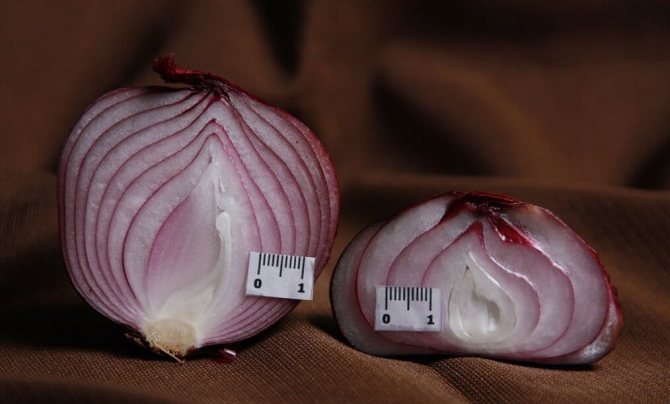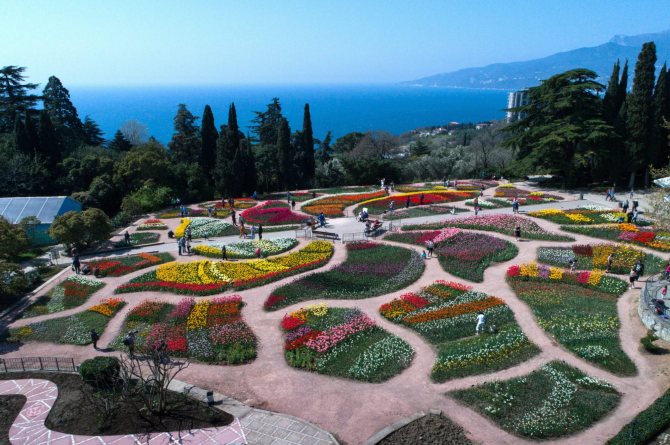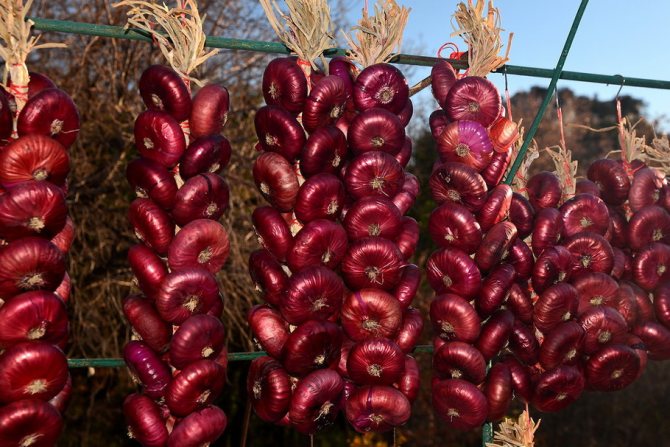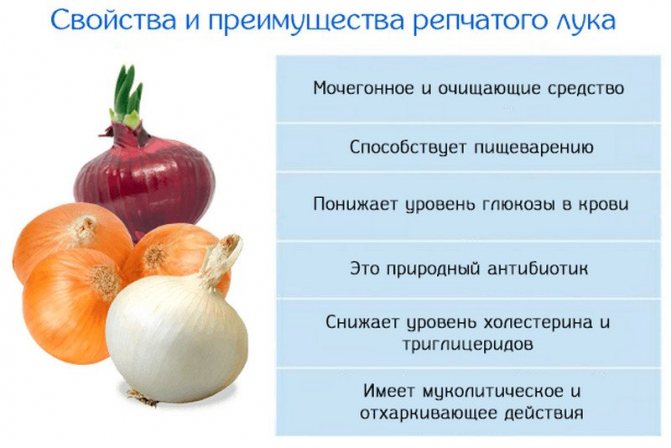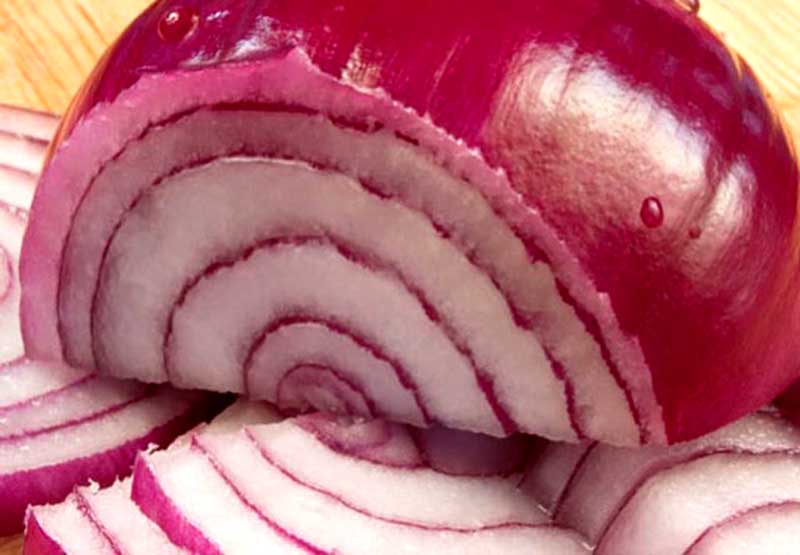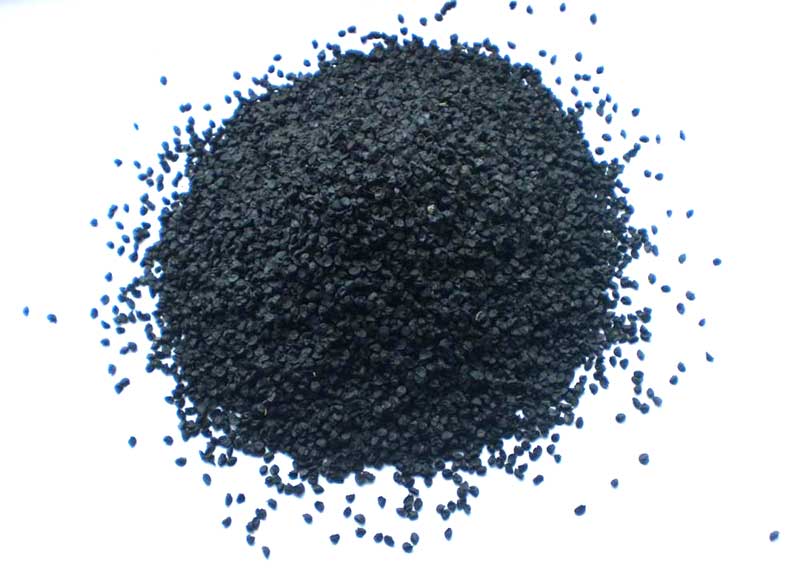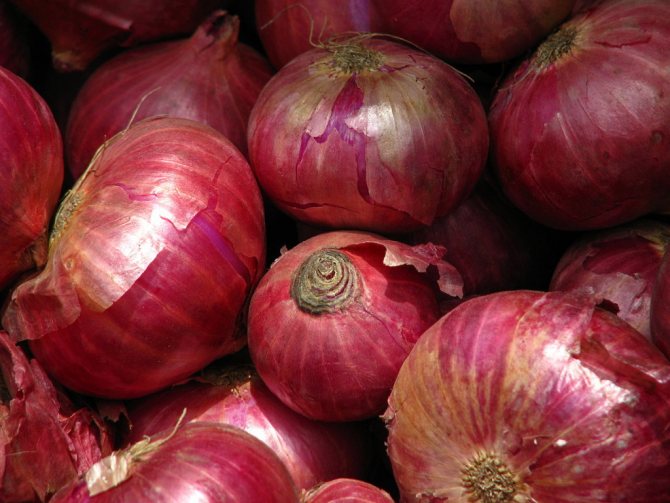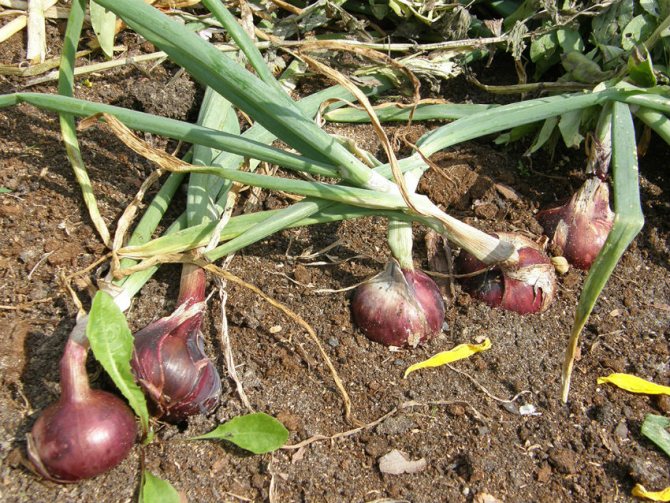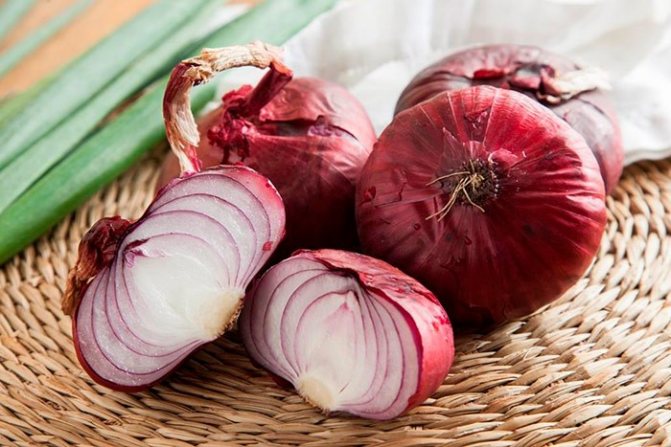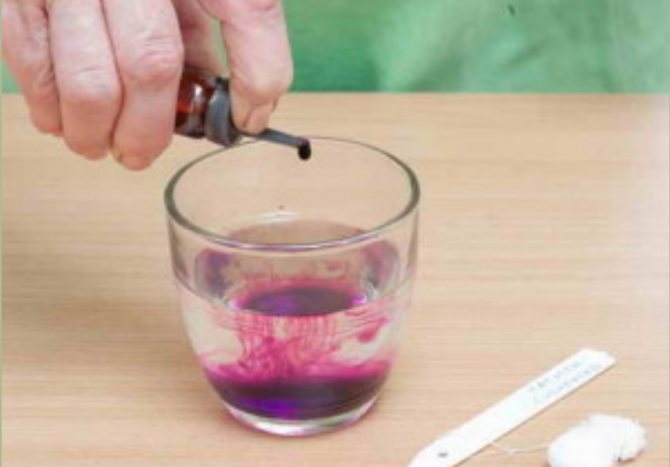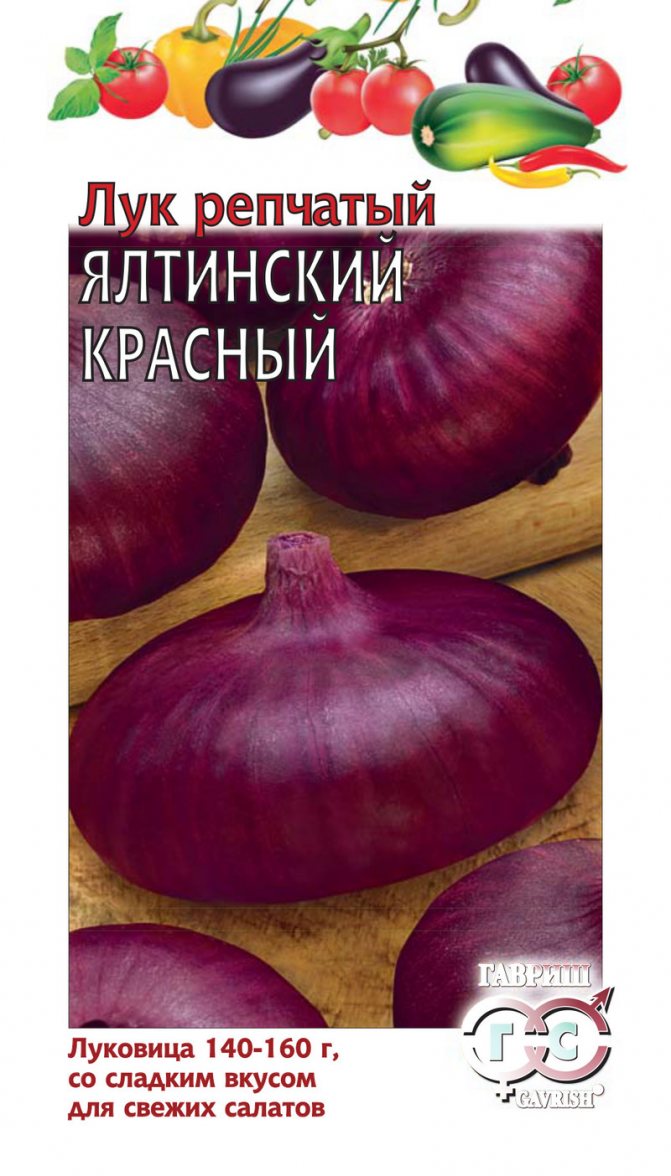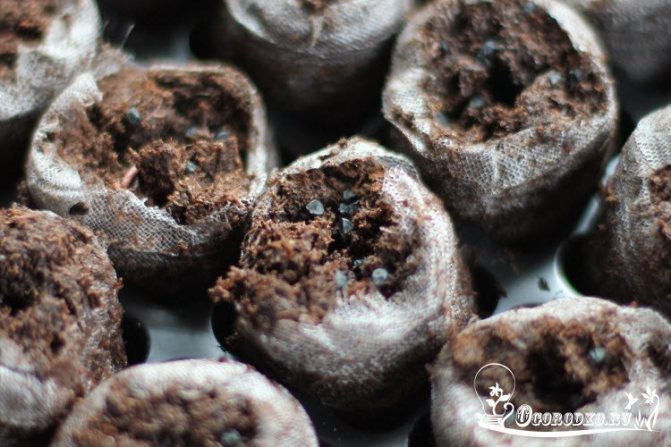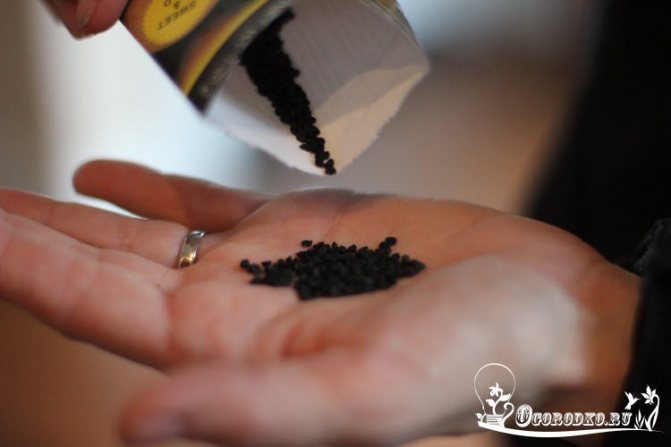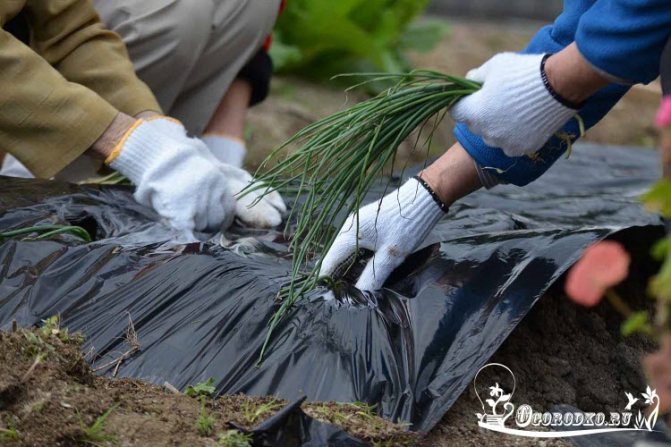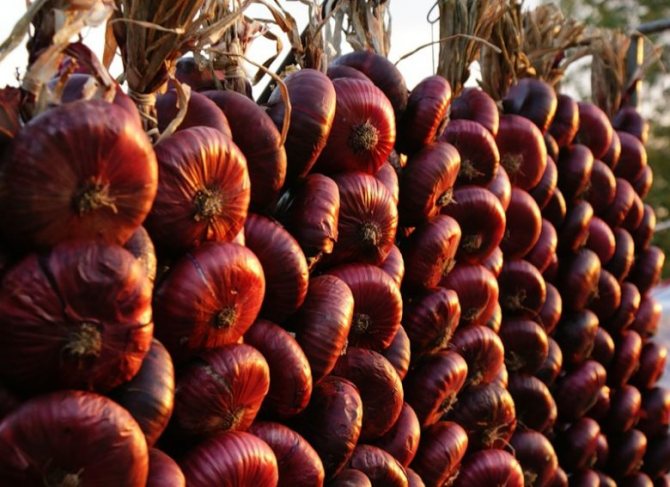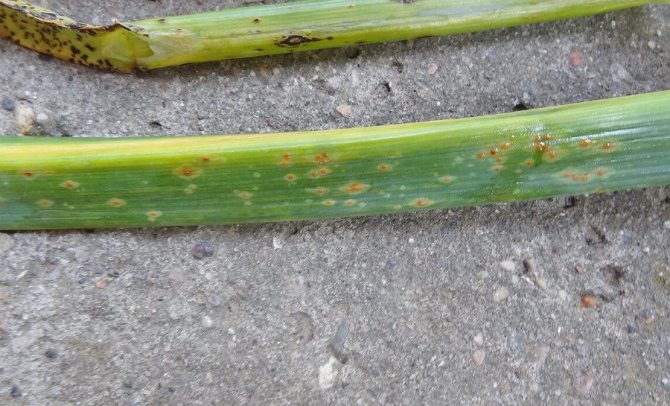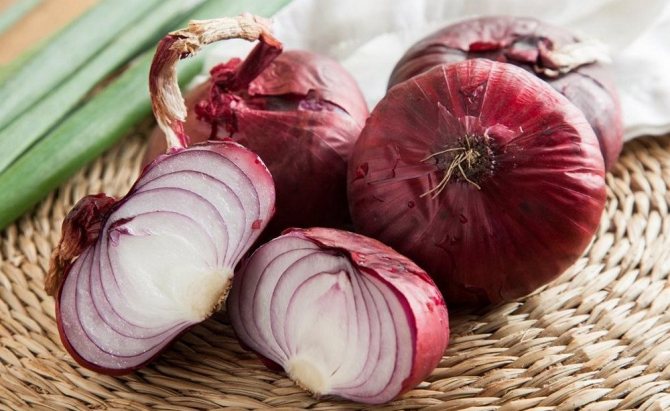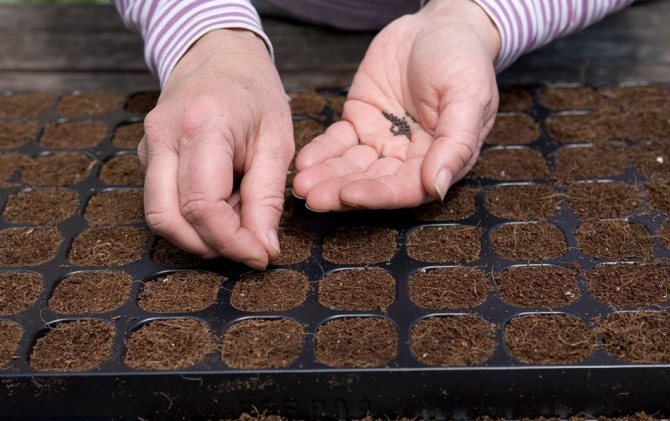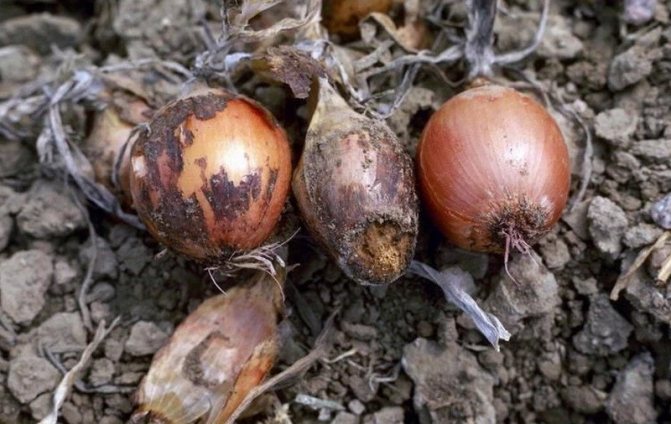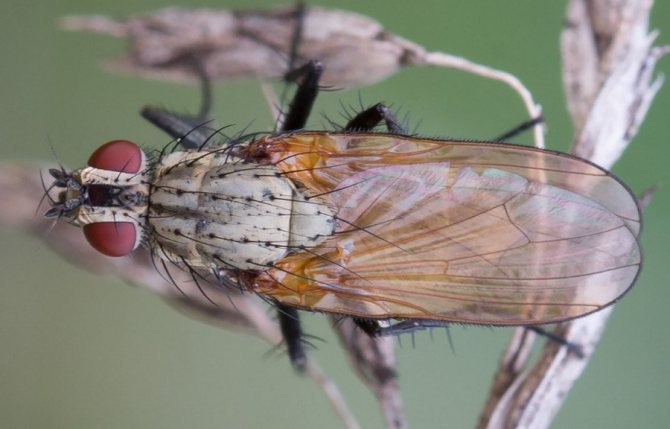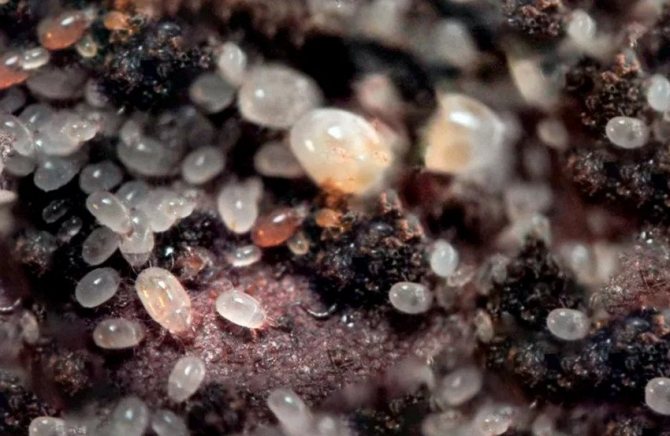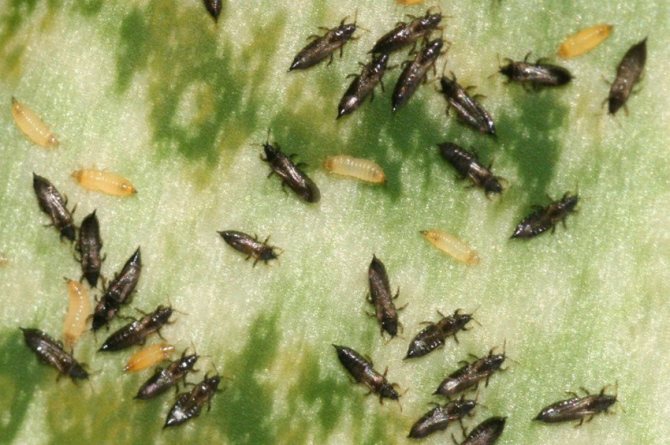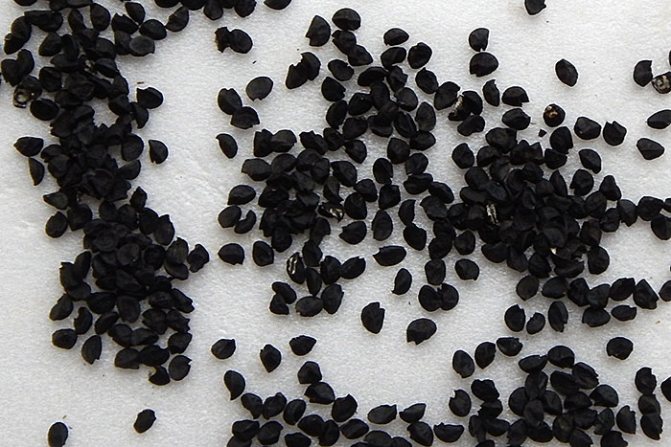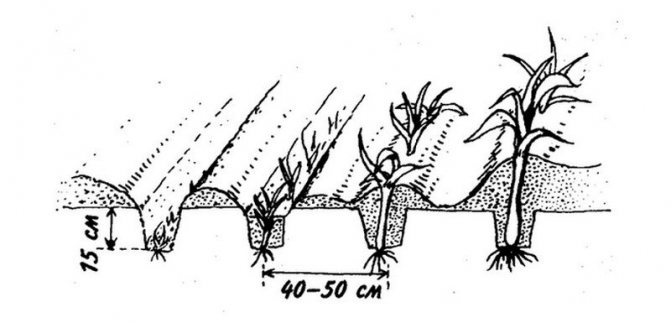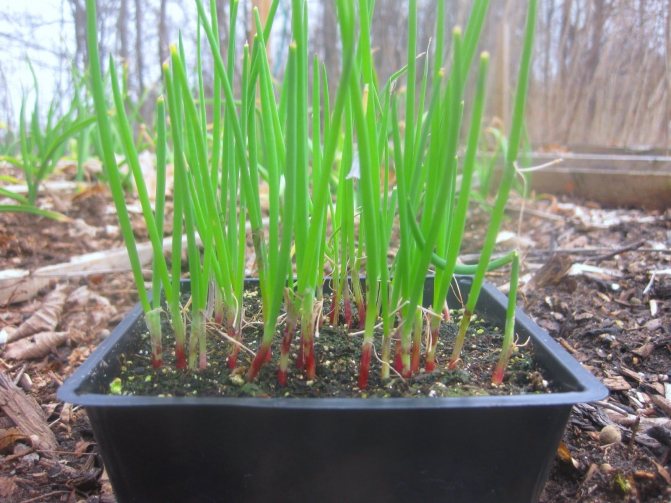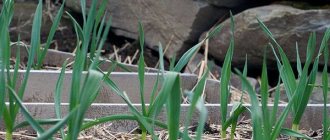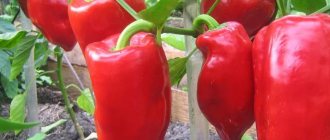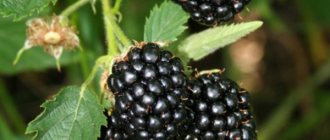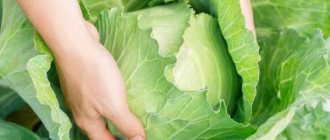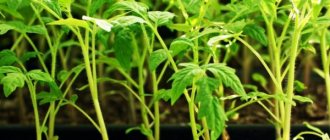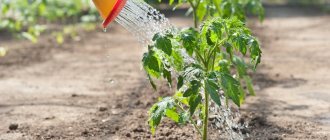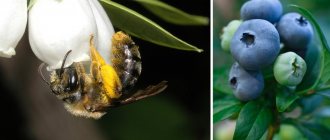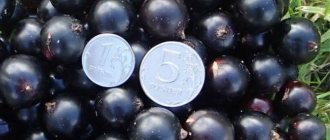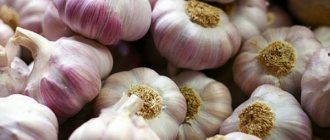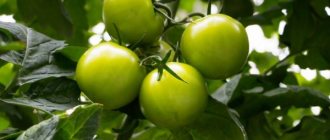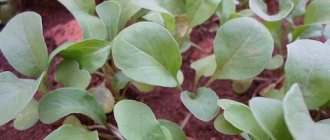What is this variety?
general characteristics
In another way called "mountain", Yalta onion - unusual juicy raspberry color with a purple tint... Unlike other varieties of this culture, it practically does not taste bitter. And also the plant has many other useful properties:
- contains many antioxidants (substances that slow down aging);
- rich in vitamin C;
- activates the release of cysteine (an amino acid that helps to remove toxins from the body);
- improves digestion;
- has a beneficial effect on the work of blood vessels.
Where does it grow?
Only in Crimea, with its subtropical climate, a large number of sunny days, special water and soil, can you get such a unique variety of onions. It's believed that real Yalta onion grows exclusively in the villages of Zaprudnoye and Lavrovoye near Alushta (if you go along the highway from Simferopol to Yalta).
Description of appearance, photo
The bulbs of the plant are colored bright pink or juicy purple. The number of layers in the head is more than 7, each with a thickness of up to 7 mm. Their color is pale pink or pale purple. The shape of the bulb is flat, as if flattened.
Important!
The taste of Yalta onions is sweetish, completely devoid of bitterness. The size of a juicy bulb is about 7 cm, it weighs an average of 150 g. The height of a green feather is 120 cm.
Advantages and disadvantages
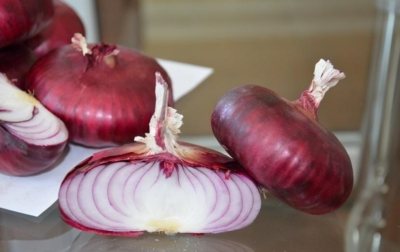
Dignity:
- sweet salad taste;
- lack of bitterness;
- attractive appearance;
- disease resistance.
disadvantages:
- not stored for long (4–5 months);
- fully manifests its properties only in certain climatic conditions;
- long ripening period (120-150 days).
What diseases and pests are resistant to?
Yalta onion is resistant to most diseases traditional for this culture. However, in rainy summers, it can be affected by powdery mildew. Plants are treated with Ridomil or Bordeaux liquid according to the instructions.
Soil requirements
In order for the Yalta onion to fully manifest its taste qualities, brown or brown-gray chernozem soils of the southern coast of Crimea, containing clay shales, are needed. The thickness of the fertile layer is 70–80 cm.
Taste qualities
Yalta onions have an excellent sweet taste without the bitterness inherent in common onions. Its fruits contain 7.4% sugars and up to 0.015 essential oils per 100 g of raw onions.
Yield
Due to the long ripening period, Yalta onions are more often grown through seedlings., its yield with this method can reach 200 c / ha, and with a seedless method, it is two times lower.
Keeping quality
Due to the high content of sugars and moisture, Yalta onions are not stored for a long time - only 4–5 months.
How is it used?
This is an onion exclusively for salad purposes. When cooked, both taste and most of the beneficial properties are lost, in addition, purple onions look bad in soups and other hot-cooked dishes.
Chemical composition
100 g of Yalta onion contains:
- fat - 0 g;
- proteins - 1.6 g;
- carbohydrates - 9 g.
Calorie content - 42 kilocalories per 100 g.
Description of the Yalta onion
Yalta onion is a relative of the Mader flat variety, which was brought to the territory of Crimea in the 19th century. travelers, hence the second name of the species - the Crimean onion. The described plant belongs to salad varieties and has many positive qualities, the main of which is the low content of essential oils, due to which the bulbs do not irritate the mucous membranes, and there is no bitterness and pungency in their taste.
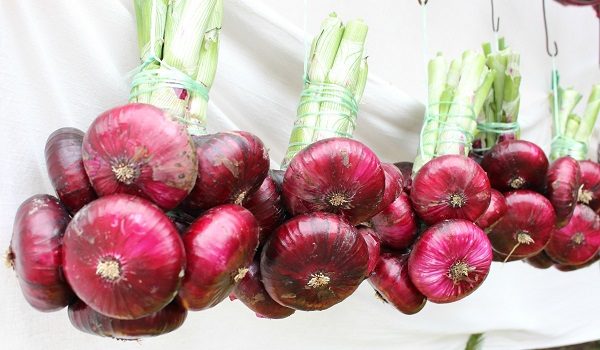

Yalta onions tied in bunches for storage
Dry scales, which are a protective layer, can be colored purple or pink. Juicy scales, up to 7 millimeters thick, are painted white or pale pink, in one head there are no more than 7 such layers. The bulb has a slightly flattened rounded shape. The main advantage will be its taste, which lacks pronounced bitterness and pungency.
The growing season of the variety is within 140-150 days., from this we can conclude that the plant takes a long amount of time to fully ripen the fruit.
Differences from other varieties
For example, let's compare the Yalta onion with other varieties of red lettuce onions, which are also grown from seeds in Crimea.
| Characteristics | Yalta | Amer | Antares |
| Ripening period | Late maturing | Mid-season | Late maturing |
| Bulb weight, g | Up to 150 | 90–100 | 80–100 |
| Hull and inner layers color | Husk is bright purple or dark pink, inside is pale pink | The husk is dark red with a purple tint, reddish inside | Husk red, reddish inside |
| Taste | Sweet without bitterness | Semi-sharp | Semi-sharp |
| Maximum yield, c / ha | 200 | 380 | 340 |
Although the Yalta onion is inferior to other varieties in yield, it surpasses them in taste and size.
Seedling growing technology
How to grow onions in winter? Planting material can be obtained at home, in greenhouses or greenhouses. For growing seedlings at home, plastic containers or wooden boxes are suitable.


They are filled with specially prepared soil. The composition of the soil is as follows:
- 1 part of sod land;
- 1 part of humus;
- 80 grams of complex mineral fertilizer.
The soil layer in the container should be at least fifteen centimeters. Seeds should be soaked before sowing. The wet processing time is at least twenty hours. Such processing will increase the germination of the seed.
After processing, the seeds are dried. In containers, soil is moistened and grooves are formed. Seeds are sown in them. Sowing should not be thickened. Seeds are placed at a distance of one centimeter. The sowing furrows are sprinkled with humus. Next, the soil is compacted and sprinkled with clean sand. Gently watered and covered with foil. The seed containers are placed in places with a temperature of at least twenty degrees Celsius. The first shoots appear in seven days.
How to distinguish from a fake?
Attention!
Unfortunately, in Crimea, fake Yalta onions are often sold, also grown on the peninsula, but in other areas and on a different soil.
Therefore, it is important to know how to distinguish a real Yalta onion from a fake:
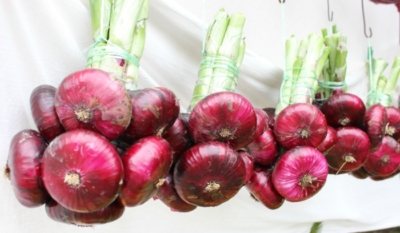

- color - from bright pink to purple;
- the shape of the bulb is flattened;
- the taste is sweet without bitterness;
- cut - fleshy, white scales with pale pink edges;
- there is no specific onion smell, does not hurt the eyes;
- it is difficult to separate the scales from each other.
Growing
Currently, the bulk of the production of Yalta onions falls on the private sector. Both seed material and marketable harvest ready for sale are produced. Due to the increased demand for Yalta onions and the inability of the private sector to expand the seed production network, lower quality vegetable products began to appear en masse. So, there may be varieties that are different in color intensity, juiciness and thickness of scales, as well as with a more pronounced sharpness of the bulbs. This leads to a decrease in the market value of the final product.
At present, there is an acute issue of preserving the purebred “Yalta” onion variety. This is mainly due to the cultivation technology. Onion seeds "Yalta" are grown indoors using seedling technology. This technology is manual and very labor intensive. It is very difficult to recreate all the necessary growing conditions at the required level outside of special seed farms. But nevertheless, it is possible to get a crop of sufficiently high quality at home.
Can it be cultivated in other regions?
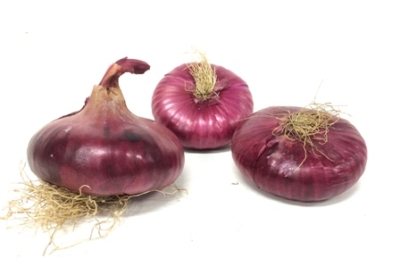

Yalta onions are very picky about the composition of the soil and its temperature (in areas where it grows, the soil is warmed up by the sun as much as possible during the day and remains warm all night). It is possible to grow it in other regions, but it will not be possible to achieve such a sweet taste as in the Crimea. This onion variety also needs a lot of sunlight, so cultivation in central Russia is almost impossible.
For instance, to grow from seeds in the Moscow region, it is necessary to provide the culture with very fertile soil and fertilize it well before planting with ammonium nitrate and potassium salt. The onion must be planted in an open, sunny place.
Beneficial features
The presence of many minerals and vitamins in this culture makes its beneficial properties significant. In particular, a high percentage of vitamin C makes it possible to successfully use Yalta onions for the prevention of ARVI.
In addition, this vegetable is different:
- the capacity of useful antioxidants (there are 2 times more of them than other representatives of onions) - therefore it has the ability to resist inflammation;
- the presence of a unique substance allicin - therefore it can block atypical cells in the body, prevent the development of tumors;
- the presence of sulfur, and of its various types, - it helps to reduce the amount of toxins in the body, lower cholesterol levels, improve heart function, as well as the condition of hair, nails and skin;
- the ability to positively influence the work of the gastrointestinal tract - in particular, the juice of the Crimean onion restores the acid balance of the stomach;
- positive influence on the work of the brain and nervous system - especially recommended for insomnia and atherosclerosis;
- the possibility of using in cosmetology - masks and gruel from it help with hair problems, acne and skin pigmentation.
How to grow?
To grow Yalta onions in Crimea and especially outside of it, you have to try very hard.
Embedding in soil
The soil is dug up in the fall, and deep enough - at least 50 cm. The entire dug layer is mixed with humus (1: 1), mineral fertilizers (50 g of ammonium nitrate and potassium salt per 1 m2). In heavy soil, it is better to add 1–2 bags of peat.
The landing site is sunny, open, not flooded by groundwater.... You can plant Yalta onions with seeds for seedlings and sevkom.
How to sow with seeds for seedlings?
Procedure:
- The seeds are calibrated.
- Then soaked in potassium permanganate (slightly pink solution) for half an hour.
- Placed in a growth stimulator for 6 hours.
- They are dried and planted in seedling containers at a distance of 1 cm between seeds and 5 cm between rows (sowing depth for seedlings is 1 mm).
- Place containers under plastic wrap in a warm (25 ° C) place until germination.
- After pecking the sprouts, the film is removed, the temperature is lowered to 15 ° C.
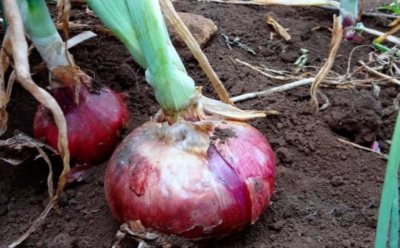

Further care of the seedlings includes:
- Regular watering (the topsoil should always be moist). Watering should be reduced a week before planting in the ground.
- Fertilizer: two weeks after germination, feed with a mixture of 30 g of superphosphate, 5 g of urea and 3 g of potassium chloride per 5 l of water;
- a week later - with a solution of nitrate (1 g per 1 liter of water).
Yalta onions are transplanted into open ground at the age of 50-60 days, when there are 3-4 green feathers on the plant. Before planting, the feathers are cut to the middle. The scheme for planting onions in a garden bed is 10 × 40 cm.Watering the soil well, the bulbs are buried in the ground by about half, the soil around is compacted.
Sevkom
You can plant Yalta onion sevkom... Planting material must be chosen very carefully so as not to buy a fake. After preventive treatment with copper sulfate, the seedlings are planted in the garden in the same way as the onions grown by seedlings.
Care
Yalta onions are very picky about watering: without a sufficient amount of moisture, they will not gain the necessary juiciness and sweetness. However, three weeks before harvesting, the bulbs are no longer watered (prevention of decay). For better moisture penetration to the roots, the garden bed is regularly loosened and weeded. Also, these activities are necessary in order for the bulbs to receive the maximum amount of sun.
Important!
After increasing the size of the bulbs, they carry out "hilling in the opposite direction" - they shake off the earth from them for better lighting.
Yalta onions are fed 2 times a month:
- first feeding - a solution of a ladybug (1:10) or chicken droppings (1:20);
- second and subsequent feeding - mineral fertilizer (40 g of superphosphate and 20 g of potassium chloride).
Features of the Yalta onion
A huge benefit to the human body is brought by one variety of red onions, which can not be grown in every region. Even if all the conditions of agricultural technology are observed, the unsurpassed taste cannot be preserved. Only Crimea is suitable for its cultivation. We are talking about such an interesting species as the Yalta onion. There is a certain difference that allows you to put it on a separate step and distinguish it from other varieties.
The Yalta varietal red onion produces flattened fruits with a rich purple color.
The scales are juicy and thick. Bitterness is completely absent, thanks to which the variety was dubbed as a salad and is eaten fresh. After heat treatment, the bulb loses all its beneficial properties. The growing season for the Yalta onion is 150 days.
This variety is extremely popular, due to which sellers strive to deceive buyers and, using cunning techniques, sell them fake onions, passing them off as the famous Yalta. There is even a known case of soaking white ordinary turnips in ink so that they acquire the desired reddish color, and the fake looks like the original.
In view of this, you need to know that the Crimean real bow can be recognized by the following features:
- the heads are flat and deep purple;
- when grown in Crimea, turnips have a sweetish taste without the slightest hint of bitterness;
- in the section, white layers of pulp are distinguished, which have a lilac tint;
- this variety does not irritate the mucous membrane, does not cause lacrimation and does not have a pungent odor;
- the scales of the Yalta onion are tightly knit together, and their number does not exceed 7 pieces.
Ogorodnikov not only in the southern regions were interested in the Yalta onion. How to grow it in the middle lane? First of all, it must be borne in mind that sowing seeds in open ground is carried out exclusively in the Crimea. In all other localities, the cultivation of this variety is carried out exclusively by seedlings.
The very beginning of spring is considered the optimal time for sowing. Seedling boxes are placed in a heated room or in a greenhouse.
Planting the famous Yalta onion seedlings is carried out as follows. The boxes are pre-prepared and disinfected. After that, nutrient soil is poured into them, consisting of decayed foliage and rotted manure, as well as earth. A little superphosphate is also added there. The seed is disinfected by placing it in a solution of potassium permanganate, after which it is well dried.Grooves are made in the soil at a distance of 5 cm from each other, 1 cm deep. The distance between the seeds should also be 1 cm. Watering is done with a spray bottle. Until the emergence of shoots, the boxes are kept in a room with a temperature of + 25 ° С, and then they are lowered to a level of + 15 ° С during the day and + 10 ° С at night. Twice the seedlings are fed with complex fertilizers, and before planting them in open ground, they are hardened.
Harvesting and storage
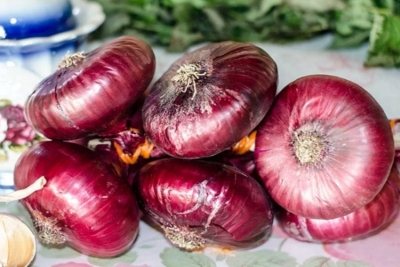

Yalta onions are harvested a little later than ordinary ones - in the second half of August. It is important to be in time before the rainy season, otherwise you can lose the harvest - the onions will rot.
Harvesting begins when the leaves fall... The bulbs are dug up and laid out for storage in a ventilated place. Then they are removed to a basement or cellar with a moisture content of no more than 70%, where the onions will be stored for 4–5 months.
Seedling method of growing
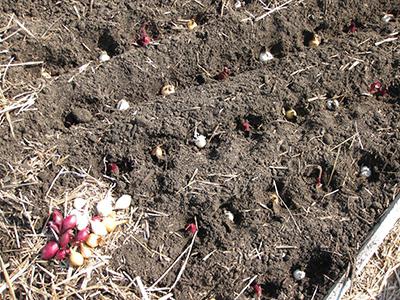

Yalta onions are late varieties. Until the full maturation of a marketable turnip from the moment of planting, it takes five months. When sowing seeds directly into the soil, the quality of the crop decreases. Also, in regions with a short summer period, cultivation is almost impossible. The two-year method is fraught with difficulties. Onion sets are poorly stored. Onions grown in this way have a sharper taste. The seedling method allows you to solve these problems.
How is it eaten?
Onions of this variety can be put in salads, garnished with sliced onion rings for fish and meat dishes. You can even eat it just like that, with bread.
The sweet Yalta onion bred by Crimean breeders grows best on the rocky and fertile soils of the peninsula under the generous southern sun. It is possible to grow it in other areas, but it will not work to achieve the original taste. When buying ripe onions or sets in Crimea, it is important not to run into a fake.
If you find an error, please select a piece of text and press Ctrl + Enter.
We tried to write the best article. If you liked it, please share it with your friends or leave your comment below. Thank you! Excellent article 0

